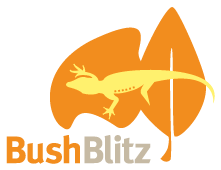By Dr John Westaway
As a botanist, my role in the team was to study the plants, but it was impossible not to be awestruck by the birds. We were witness to a true wildlife phenomenon that plays out each year on the islets of the Coral Sea in the form of mass seabird nesting. Very large congregations of nesting seabirds rely on these tiny coral cay specks in a vast ocean as a critical resource for breeding.

The small cay of East Diamond less than 20ha supports many thousands of seabirds. We were greeted by a loud raucous cacophony of squawking birds reeling low above the island vegetation. Eight species of seabird were nesting on East Diamond Islet during our brief visit including thousands of Sooty Terns, a sleek pied species with sharply-pointed wing tips that flies radically, shrieking loudly, seeming to alight for only the briefest moment before taking off again. Another tern-like species, the Common Noddy, a beautiful rich dark brown bird with a silvery cap, had constructed simple platforms of foliage in the upper branches of shrubs.
The island supports three species of boobies, large gannet-like seabirds that soar and gracefully glide low over the water when foraging. The most numerous is the Red-footed Booby which has a bluish bill and constructs stick nests in the large shrubs of the Octopus Bush (Argusia argentea) that fringe the island. Brown Boobies are a rich chocolate colour above and nest on the ground in the more sheltered interior parts of the island. The Masked Booby is the larger of the boobies and is a beautiful pure white colour with dark wing markings and yellow bill. This bird doesn’t bother constructing a nest but simply lays its eggs in the sand on the foredune, including in places which seem vulnerable to storm surges.
In contrast to the colonial boobies, noddies and terns, there is the Red-tailed Tropic Bird that is solitary or seen in pairs. It is pure white with a large red beak and two very long thin red tail plumes. It nests on the ground in the shade and shelter of Octopus Bushes.
The largest seabirds on the island are the two species of frigate birds (Lesser and Greater). They have wing spans exceeding two metres and resemble modern pterodactyls with sharply bent wings and forked tails. These are the pirates (kleptoparasites) of the sea that cruise above the boobies and terns awaiting their success fishing, then dive bomb from above to harass them to release their catch, which the frigate can often speedily retrieve before it reaches the water. Male frigates have a large throat patch that when breeding swells into a bright red balloon. They nest both on the ground in colonies and in the branches of strong shrubs. Some individual Octopus Bushes on the island have frigate birds, Red-footed Boobies and one or two species of noddy all nesting together illustrating the key role this plant provides for seabird breeding success.
